So says the catchy advertising slogan on the welcome sign as you drive into this small town of ~4,700 residents in extreme southern Utah. Why were we there? Proximity to Zion National Park and Pink Coral Sand Dunes State Park, and both were as good as we had hoped. With a national monument and a few local attractions added to the itinerary, we were sufficiently entertained for a week.
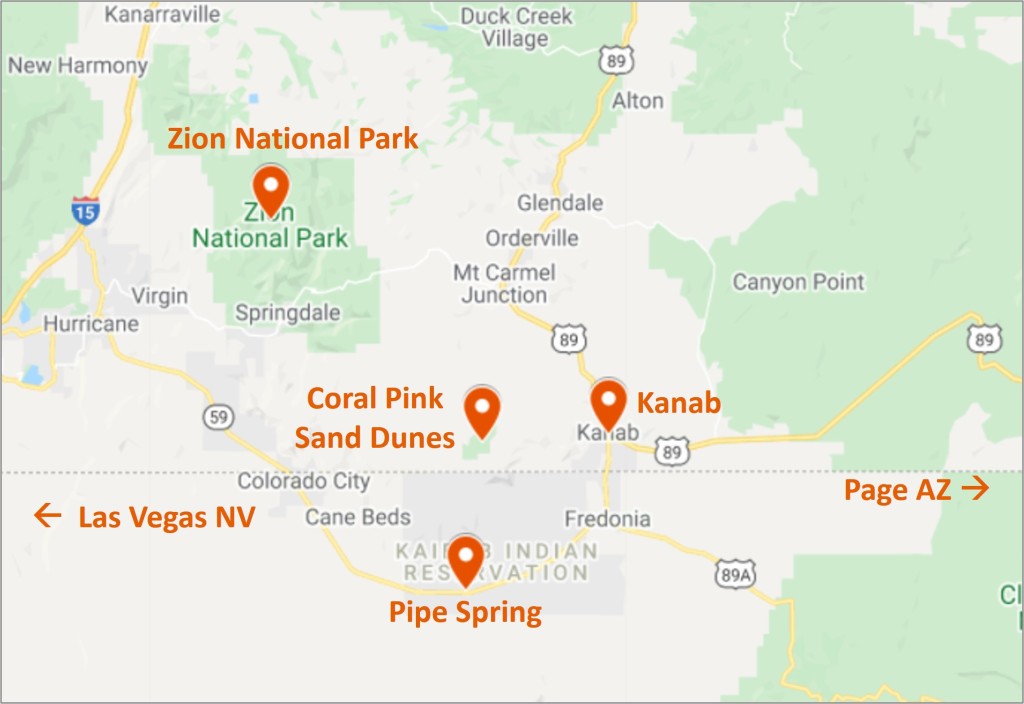
Zion National Park

Zion was the star of the show. Situated at the intersection of three very different geographic areas – the Colorado Plateau, the Great Basin and the Mojave Desert – it features deep canyons carved over millions of years by the Virgin River through Navajo sandstone.
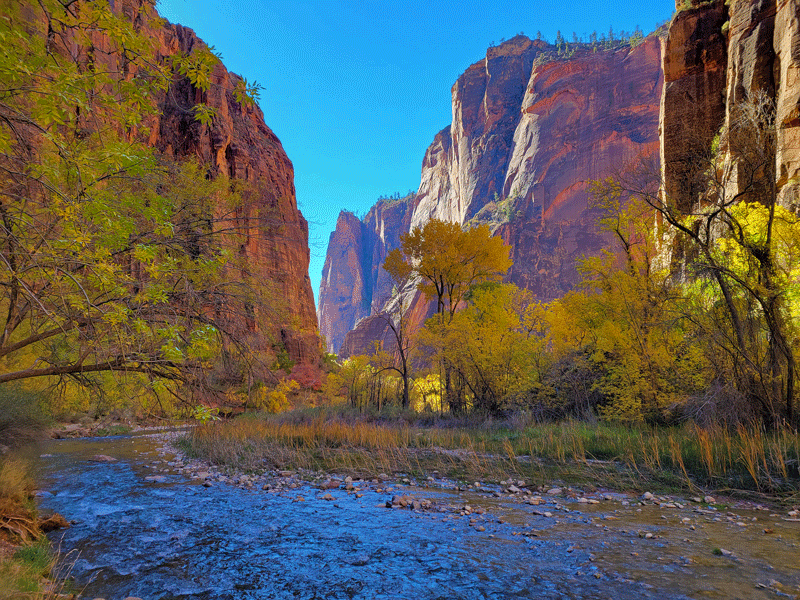
There are four life zones within Zion’s 229 square miles – desert, riparian, woodland and coniferous forest – as well as an impressive diversity of animals – 289 species of birds, 75 mammals and 32 reptiles. Zion was protected as a national monument in 1909 and designated a national park ten years later.
And as you might expect, Zion doesn’t lack for visitors – about 4 million a year (fourth highest among national parks), and it was plenty busy on the picture perfect day of our visit in early November. Approaching the entrance from the east side, we were in a steady line of traffic with limited or no parking availability at popular pullouts along the highway.
Once we found parking near the visitor center and boarded the shuttle bus, however, it was smooth sailing getting to and from the park’s most popular trailheads and other waypoints. In 2000, Zion instituted a mandatory shuttle system – the first national park in the lower 48 to do so – for navigating a 13 mile section called the Scenic Drive. It was convenient and efficient – no complaints from us!
With only one day for our visit, we wanted to hit as many highlights as possible. Entering Zion from the east side, the scenery extravaganza starts immediately with views of giant rock cliffs in an array of colors and patterns.





We rode the shuttle bus to the end of the Scenic Drive and enjoyed a leisurely stroll on the Riverside Walk.





The Kayenta and Emerald Pools combo trail featured both canyon and valley views . . .

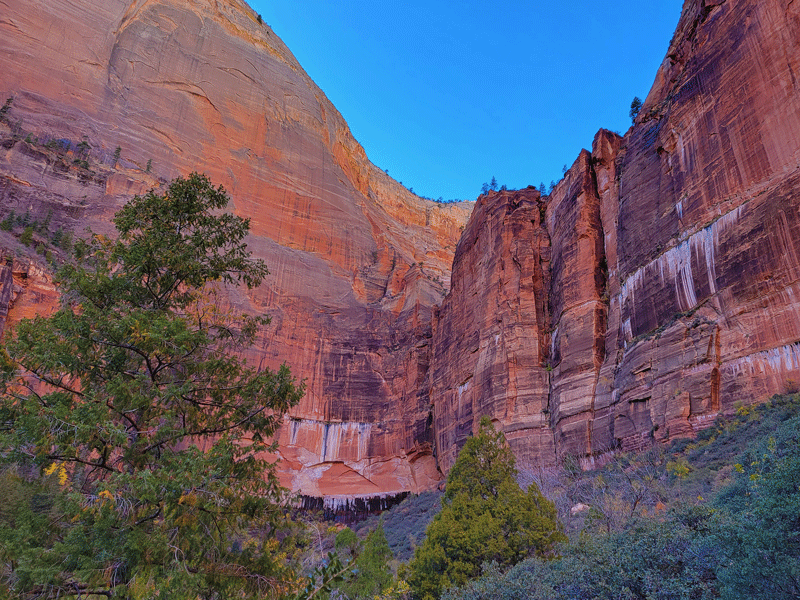


. . . and three pools. The middle pool photos were the best of the bunch.

We made one more stop along the Scenic Drive to view the Three Patriarchs.

A superb day. Our introduction to Zion had been four years earlier, when we did a couple of longer hikes – Hidden Canyon (since closed due to rockfall) and Observation Point (long and strenuous but worth the effort).

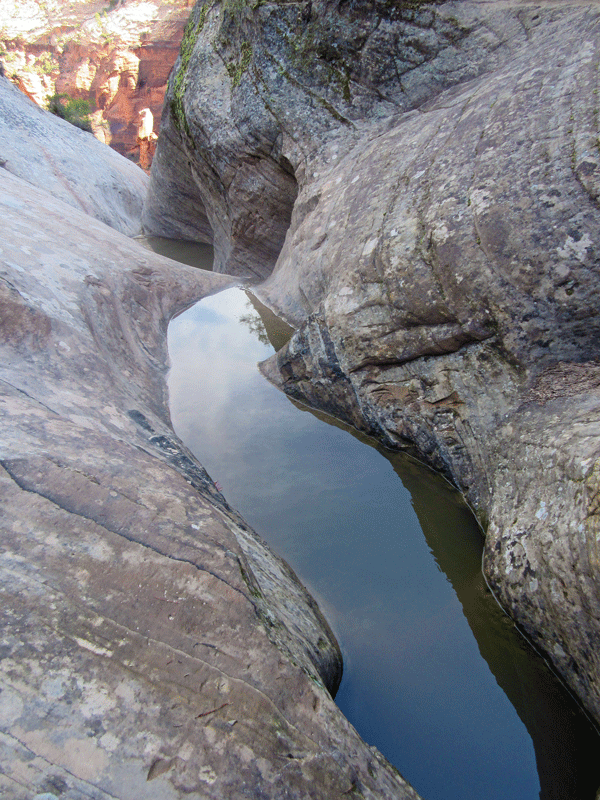


Will we be back for a third visit? Perhaps, especially if Angel’s Landing keeps calling my name!
Coral Pink Sand Dunes National Park
Who doesn’t love sand dunes? Especially when they’re pink. But are they really?

Hmmm – maybe if the light is just right, but to our eyes, the sand was more of a goldish-orange color. Either way, a pleasant day trip from Kanab.
Formed by the erosion of pink Navajo sandstone, the dunes are estimated to be 10,000-15,000 years old and can shift up to 50 feet per year, as evidenced by this “No Parking” sign peeking out from a big sand pile in the parking lot.

The most popular way to navigate this small park is with an off highway vehicle (OHV), but there is also a day use area for exploring on foot. As with other sand dunes, it’s slow going and requires patience. Our calves, quads and glutes were not happy by the end of our trek.
Here are a few photos of the dunes from various vantage points:



We slogged out to the highest point on the tallest dune and watched the sand boarders take the steep plunge to the bottom. Most fell off less than halfway down, but they didn’t seem to mind – soft landing, you know. We were also entertained watching people trying to climb back up.



We topped off our visit with a late picnic lunch and headed back to Kanab. A fun day!


Pipe Spring National Monument

Just forty acres in size, this tiny monument is located within the boundaries of the Kaibab Indian Reservation in an area of northern Arizona known as the Arizona Strip, a geographic term that was new to us.

Encompassing 7,878 square miles, this section of Arizona lies north of the Colorado River and Grand Canyon, with no direct road access to the rest of the state. Its roughly 10,000 residents, therefore, identify more with southern Utah – culturally and economically – than with their home state.
The historical ties include the practice of plural marriages, or polygamy, among fundamentalist Mormons (FLDS), which makes up part of the complicated story preserved at the Pipe Spring National Monument.
The National Park Service does a good job conveying the history in an objective manner. Here’s my short version of the saga:
- Ancestral Puebloans and Kaibab Paiute Indians happily called the Pipe Spring area home for hundreds of years.
- Attracted by the spring and lush grasslands, Mormon settlers moved in during the 1860s and established a large cattle ranching operation.
- The Mormon pioneers built a fort called Winsor Castle directly atop the spring, thereby controlling the water supply. The fort protected residents from outside attacks and also served as a refuge for polygamist wives hiding from federal marshals.
- For the most part, the Kaibab Paiutes and Mormons tolerated each other, but there were periodic skirmishes that sometimes turned violent. Neither group rolled out the welcome mat for U.S. government officials.
- Within ten years, the grasses and topsoil were both depleted due to overgrazing, so Mormon settlers began moving away. The LDS Church officially lost ownership of Pipe Spring in 1887 under a federal law called the Edmunds-Tucker Act.
- The Kaibab Paiute Indian Reservation was established in 1907 on land surrounding the Pipe Spring Ranch, which itself was designated a national monument in 1923.
Visitors to the Monument can do a self-guided tour of Winsor Castle (a/k/a “The Fort”) and other ranch structures, plus take a short hike around the property. This is Winsor Castle:






The various rooms contain period furnishings.





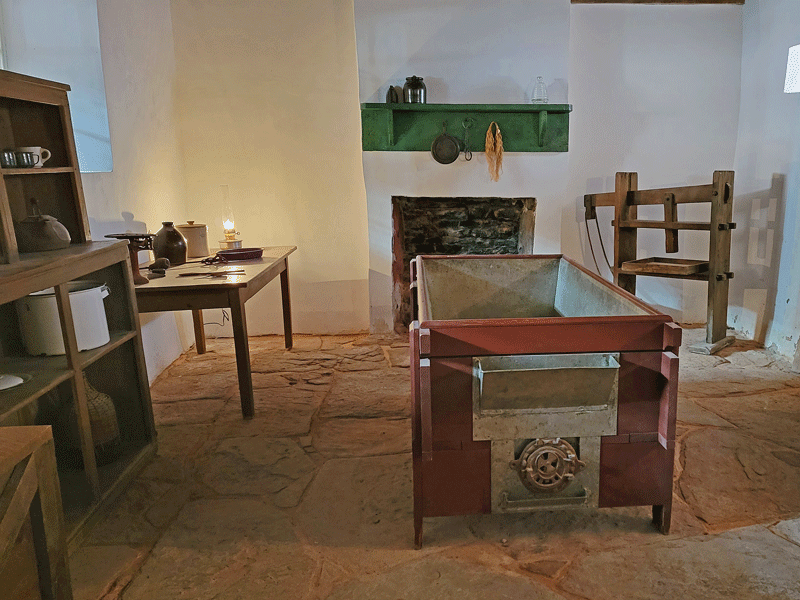


The spring runs through the fort in a trough and exits the side of the house, where it flows into a pool.

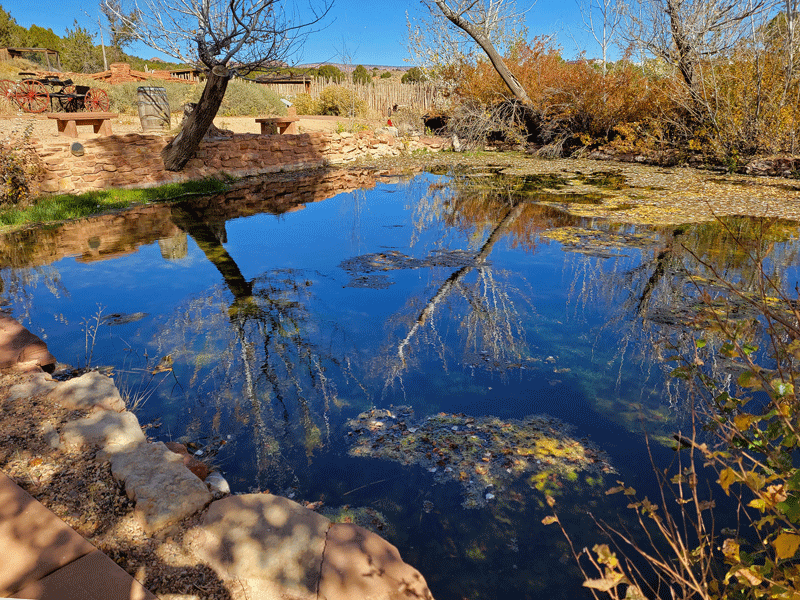
Other sights on the walking tour:


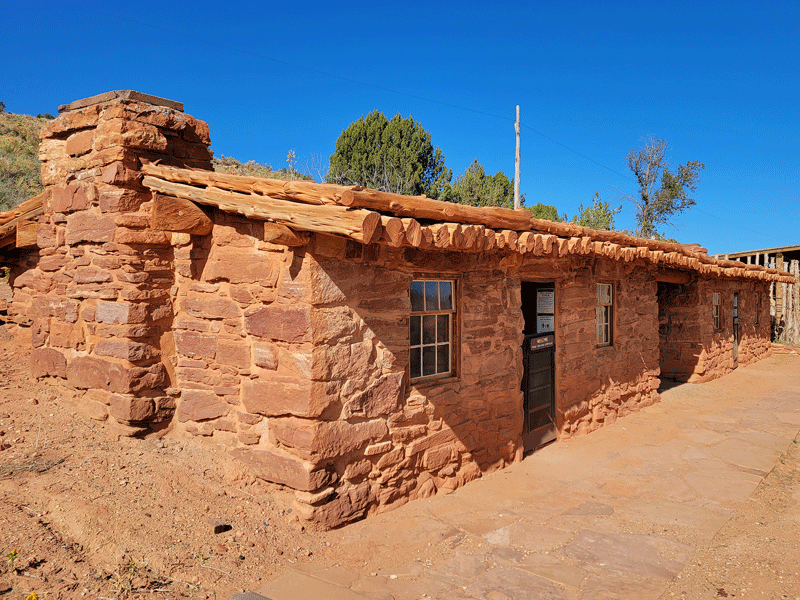
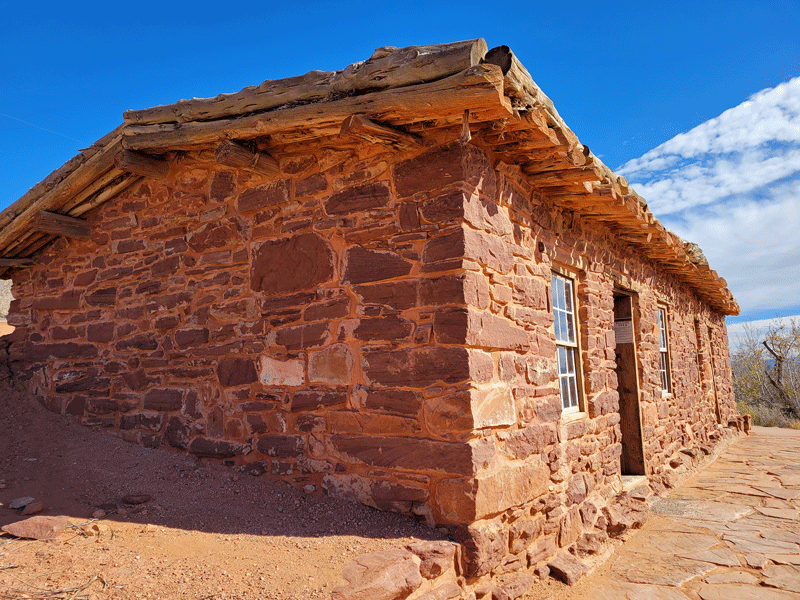
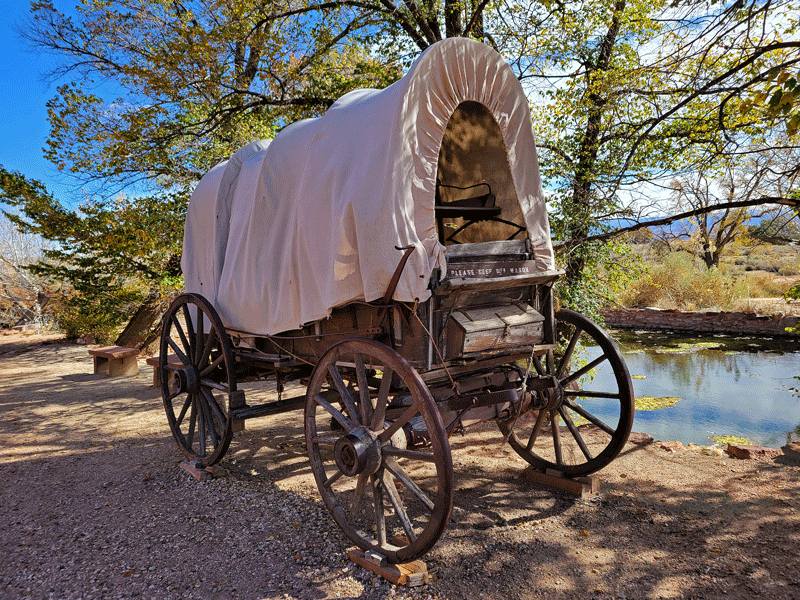

And a couple of four-legged residents:


Views from the short hike up the hill behind the Winsor Castle:


In two hours, you can watch the introductory video and tour the entire place, plus enjoy a picnic lunch. It’s worth a visit if you’re passing through the area.
Sightseeing in Kanab
Kanab boasts dozens of hiking trails, so we tried out a couple.
Squaw Trail
(Yes, the world recognizes that a name change is overdue, but it hasn’t happened yet.)
This hike with expansive views and a few steep sections started at one of the town parks. A very convenient and popular hike, but no crowds during our visit.
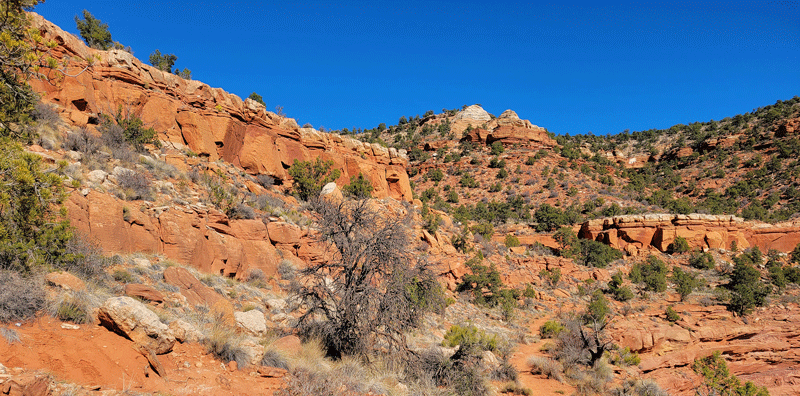




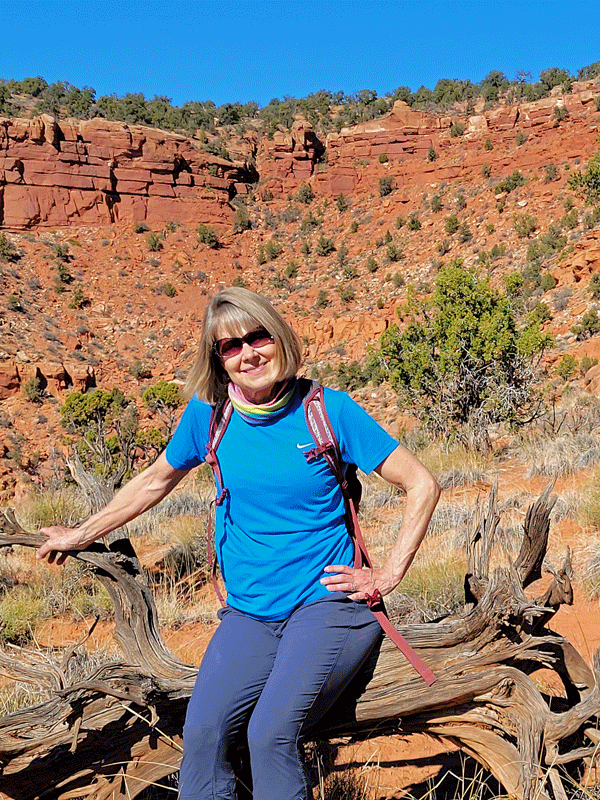
Tom’s Canyon Trail
The trailhead for this pleasant hike was also located on the edge of town, but the path quickly headed into the nearby red rocks. A few views:





We also checked out a couple of non-hiking sight-seeing options in Kanab – the Heritage House and the Little Hollywood Museum.
The Heritage House
The Heritage House is a restored Victorian-style home in Kanab that was built in 1892. Over the years, it was owned by several local prominent families, including Thomas Chamberlain, who had seven wives, 55 children and 248 grandchildren. (Only the first wife and their eight children actually lived in the home.)

One thing about Utah – the state’s history is unique. Brigham Young and his Mormon followers, driven by a desire to escape perceived persecution for their religious beliefs, arrived in the 1840s when the land was part of Mexico, and established settlements throughout the area now known as Utah. Although the controversial practice of polygamy was outlawed by the U.S. government in 1889 (and reluctantly by the LDS church in 1890), other Mormon influences are deeply embedded within Utah’s major institutions, both public and private. Today, ~62% of the state’s population identifies as Mormon.
Like other historical sites in Utah, the story of the Heritage House in Kanab is grounded in the Mormon way of life at the time.
We showed up for a free guided tour of the Heritage House and enjoyed every minute of it. The house itself was interesting but not particularly remarkable. Tour guide Emily, on the other hand, was terrific. She covered a lot of ground during our one hour visit, including Kanab area history, geography, culture, and even current events. (So what’s with those yard signs that say, “Don’t build the golf course?”)

Here are a few photos from our tour of the Heritage House:





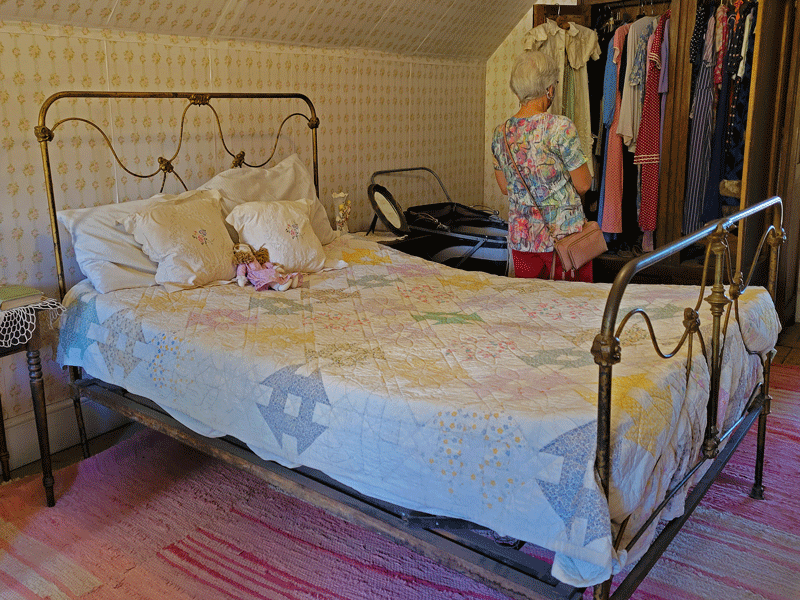





Little Hollywood Museum
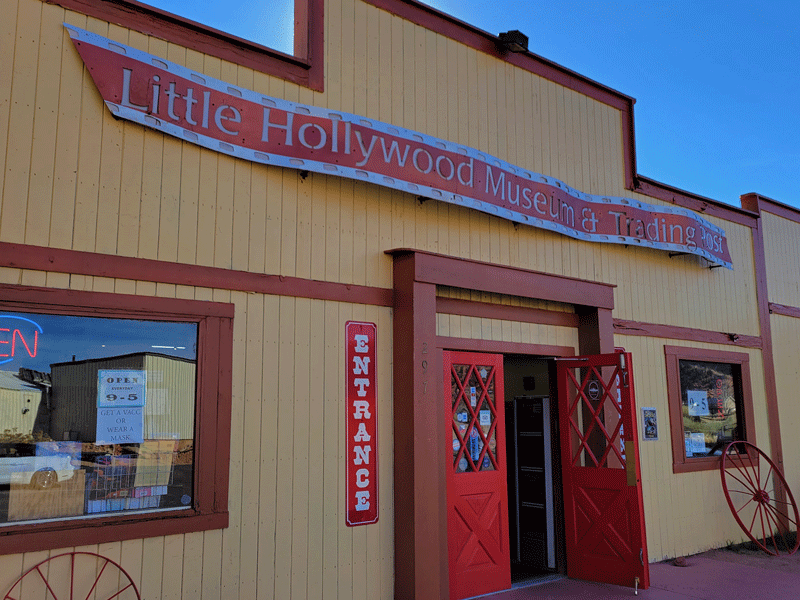
According to a handout from the Kane County Information Center, more than 125 movies have been filmed in the area, including such notables as Drums Along the Mohawk (1939), Ali Baba and the Forty Thieves (1944), Fort Apache (1948), The Lone Ranger (1956), Sergeants Three (1962), The Greatest Story Ever Told (1965), The Outlaw Josie Wales (1976), The Flintstones (1994), and Planet of the Apes (2001).
The Little Hollywood Museum (free admission) features a collection of old movie sets for visitors to explore. We met the owner (who happened to be on-site chopping down a dead tree), who shared that most of the sets were acquired at no cost. Relocating them to the museum from their original locations, however, required a large dose of ingenuity.
Photos? Of course!
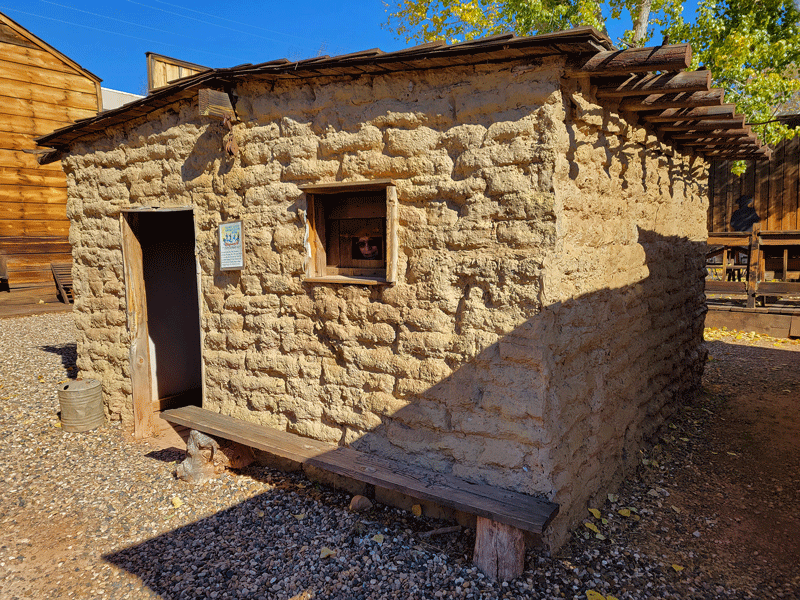








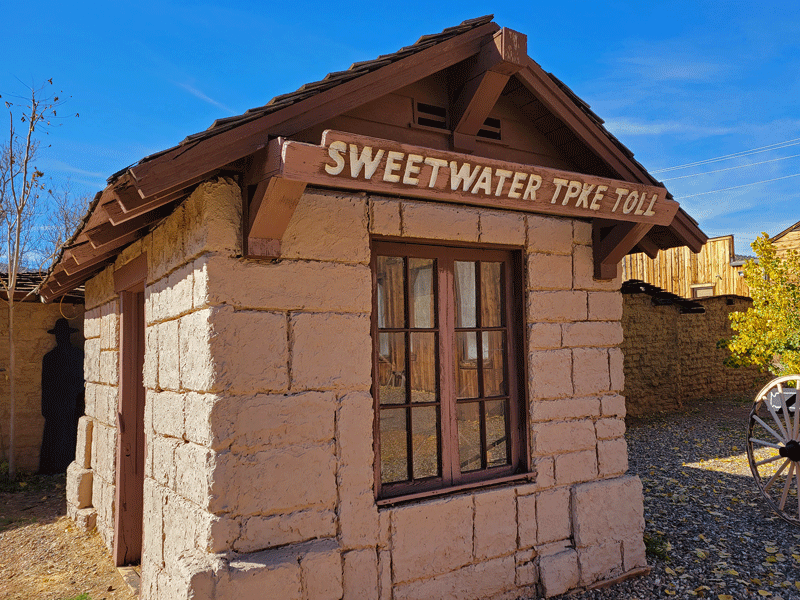
This museum – fun for all ages – is a ‘must do’ if you visit Kanab.
Next up – sightseeing in Boulder UT

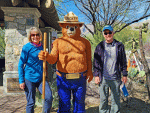

Oh Yeah! Angel’s Landing! I only made it half way before an ominous storm cloud drove me back down. And you know what happens when I don’t complete something. I gotta go back . . . with you! Beautiful photos!
LikeLike
Thank you, Marlene – I’m in!
LikeLiked by 1 person